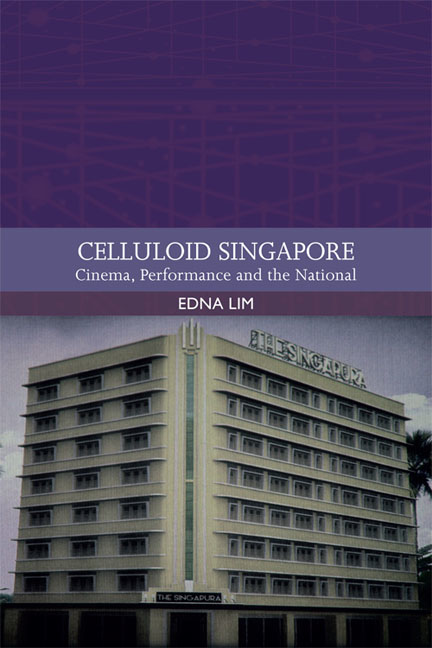Book contents
- Frontmatter
- Contents
- List of Figures
- Acknowledgements
- Traditions in World Cinema
- 1 Introduction
- 2 Merdeka!: Merger, Separation and a Transnational Golden Age
- 3 Influence, Hybridity and How the Past is a Foreign Country
- 4 Nation-building, a Nun and a Bionic Boy
- 5 Not so Foreign: the Case of Saint Jack
- 6 One People, One Nation, One Singapore
- 7 Revival Cinema: ‘Other’ Singaporeans in (An)other Singapore
- 8 Singapore Cinema in Singapore
- Works Cited
- Index
2 - Merdeka!: Merger, Separation and a Transnational Golden Age
Published online by Cambridge University Press: 11 November 2020
- Frontmatter
- Contents
- List of Figures
- Acknowledgements
- Traditions in World Cinema
- 1 Introduction
- 2 Merdeka!: Merger, Separation and a Transnational Golden Age
- 3 Influence, Hybridity and How the Past is a Foreign Country
- 4 Nation-building, a Nun and a Bionic Boy
- 5 Not so Foreign: the Case of Saint Jack
- 6 One People, One Nation, One Singapore
- 7 Revival Cinema: ‘Other’ Singaporeans in (An)other Singapore
- 8 Singapore Cinema in Singapore
- Works Cited
- Index
Summary
EARLY CINEMA: TRANSNATIONAL FROM THE BEGINNING
Film production did not begin in earnest in Singapore until the 1930s, with Samarang (Out to the Sea, Ward Wing, 1933) and Laila Majnun (B. S. Rajans, 1934). Although there are records of an earlier film, Xin Ke (The Immigrant, Liu Pei Jing, 1926), ‘there is no evidence that [the production company or the film] left any permanent filmmaking legacy in the city’. On the other hand, Samarang and Laila Majnun were advertised as bona fide Malayan films even though they were both produced by foreigners.
Samarang was directed by an American, Ward Wing of World Wide Pictures, written by American scriptwriter and actress Lori Bara, and produced by United Artists. It premiered in 1933 in the United States before opening in Singapore in 1934. Described as ‘a simple story of love amid smiling brown pearl-fishers, having as its background a forbidding jungle’, Jan Uhde and Yvonne Uhde believe that Samarang was ‘likely inspired by’ Robert Flaherty and Friedrich Murnau's Tabu: A Story of the South Sea. The film was shot in Singapore and ‘featured a multiracial cast that may be described as typically Singaporean’. Some of these actors were already famous local bangsawan (a type of Malay opera) performers. Samarang was publicised as ‘Malaya's First Sensational Thriller – filmed entirely in Singapore with local artists’ when it was released in Singapore.
Laila Majnun (also spelt Leila Majnun) was directed by B. S. Rajans, a filmmaker from India who would eventually become ‘the founding director of Singapore cinema’, and produced by Motilal Chemical, a Bombay company that supplied projector lamp carbons to Malayan cinemas. As Raphael Millet notes, the ‘story itself is not really Malay as it was mainly inspired by Arabic folklore, specifically One Thousand and One Nights, and also partly Shakespeare's Romeo and Juliet.’ Laila Majnun was also likely influenced by Leila Majnu (1931), a very popular, ‘all talking, singing, dancing’ Hindustani film, and ‘introduced an Indian-influenced filmmaking style that was to dominate local Malay productions for years to come’. The film also featured a local cast of popular bangsawan performers as well as Arabian and Egyptian dancers. It was released one day after Samarang and marketed as ‘The First Spectacular Colossal Malay Talkie … entirely produced in Singapore’.
- Type
- Chapter
- Information
- Celluloid SingaporeCinema, Performance and the National, pp. 21 - 42Publisher: Edinburgh University PressPrint publication year: 2018



